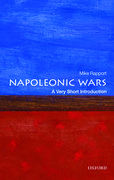By Mike Rapport
The Duke of Wellington always has a traffic cone on his head. At least, he does when he is in Glasgow. Let me explain: outside the city’s Gallery of Modern Art on Queen Street, there is an equestrian statue of the celebrated general of the Napoleonic Wars. It was sculpted in 1840-4 by the Franco-Italian artist, Carlo Marochetti (1805-1867), who in his day was a dominant figure in the world of commemorative sculpture. Amongst his works is the statue of Richard the Lionheart, who has sat on his mount and held aloft his sword outside the Houses of Parliament since 1860.
Yet Glasgow’s lofty monument has been a magnet for pranksters – ever since the 1980s, according to the BBC – who regularly scale the pedestal, Copenhagen’s (the horse’s) flanks and then, clinging onto the Iron Duke himself, crown him with an orange traffic cone. This has caused some controversy: the police warn that the acts of intrepid, late-night climbers (who, to be frank, may also have enjoyed the hospitality of the local hostelries) is an act of vandalism and is downright dangerous. The government-funded agency that oversees the care of the country’s historic buildings, Historic Scotland, acknowledges that embellishing Wellington with a modern piece of traffic paraphernalia is now a ‘longstanding tradition’, but emphasises that the statue is A-listed and so needs to be protected from damage – and there has indeed been damage: on different occasions, the general has lost a spur and his sword. Others argue that the ‘coning’ of Wellington is a worthy expression of the people’s sense of humour and that it is as much a part of the cityscape as its historic buildings and monuments. And indeed the statue has become iconic – not because it is a likeness of the Duke of Wellington, but because the general has a cone on his head: postcards proudly depicting this symbol of Glaswegian humour are easy to find.
This controversy sprang to mind when I was first putting together a proposal for writing a Very Short Introduction on the Napoleonic Wars. One of the reviewers very helpfully suggested that the book might consider a chapter on the conflict in historical memory and commemoration. When I came to write this, the final chapter, I considered opening it with an account of the ‘coning’ of the Duke of Wellington, but in the end I felt that such irreverence and jocularity sat rather uneasily with the content of the rest of the book, which tells a tale of aggression, international collapse, and human suffering. Yet the fact that the Duke still sits, as ever, with a garish point on his head – gravity making it lean at a jaunty angle – did make me wonder about how far the Napoleonic Wars (including, by extension, the French Revolutionary Wars from which they emerged – collectively the wars lasted from 1792 to 1815) have left a legacy that is embedded, visibly or otherwise, in our European cityscapes.
This might well be more obvious on the continent than in the British Isles, since there was a direct impact as armies rampaged across Europe – and there were therefore more sites clearly associated with Napoleonic conquest, European resistance to it, and later commemoration of the conflict. In Paris, the very same Marochetti was responsible for one of the reliefs on the Arc de Triomphe in Paris, the one depicting the Battle of Jemappes (one of the French Revolution’s early victories over the Austrians in 1792). The Arc was completed under the July Monarchy (1830-48), which worked hard to appropriate the Napoleonic legacy for its own political purposes. The same regime nearly awarded Marochetti the commission to create Napoleon’s tomb in the Church of the Invalides when his body was repatriated from Saint Helena. The sculptor, in fact, was producing models for this work as he was busy on Glasgow’s Wellington statue (giving the latter a pedigree that surely reinforces Historic Scotland’s mild-mannered point). Yet British towns and cities are also embedded with places that are connected with the French Wars – as barracks, as headquarters, as places of exile and refuge, as naval dockyards, as depots for PoWs, as sites of popular mobilization. Sometimes the associations are long-forgotten, sometimes they are commemorated. The conflict is remembered in the monuments that ask us not to forget the carnage and in the individuals who are commemorated in stone and bronze. These may, like Glasgow’s Iron Duke, have become so much part of our urban environment that they are almost unnoticed unless they have a cone on their head, but the traces and memory of the French Wars in Britain’s towns and cities… now there’s a project!
Dr Mike Rapport is Senior Lecturer in the Department of History at the University of Stirling. He is the author of Nationality and Citizenship in Revolutionary France: The Treatment of Foreigners 1789-1799 (OUP, 2000), The Shape of the World: Britain, France and the Struggle for Empire (Atlantic, 2006), 1848, Year of Revolution (Little, Brown, 2008), and The Napoleonic Wars: A Very Short Introduction (OUP, 2013).
The Very Short Introductions (VSI) series combines a small format with authoritative analysis and big ideas for hundreds of topic areas. Written by our expert authors, these books can change the way you think about the things that interest you and are the perfect introduction to subjects you previously knew nothing about. Grow your knowledge with OUPblog and the VSI series every Friday!
Subscribe to the OUPblog via email or RSS.
Subscribe to only VSI articles on the OUPblog via email or RSS.
Subscribe to only history articles on the OUPblog via email or RSS.
Image credit: Statue of Wellington, mounted. Outside the Gallery of Modern Art, Queen Street, Glasgow, Scotland [Author: Green Lane, Creative Commons Licence via Wikimedia Commons]



Recent Comments
There are currently no comments.